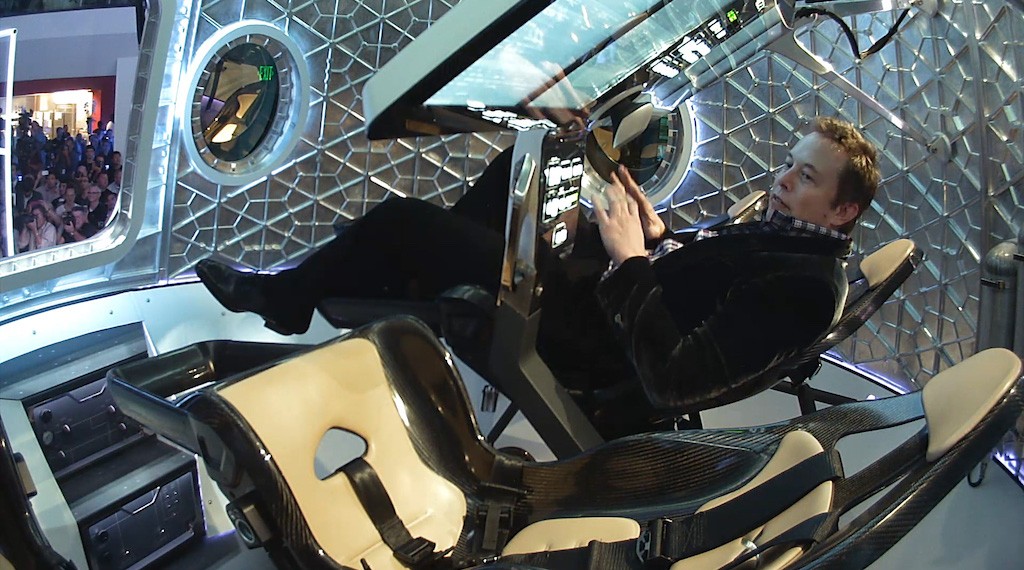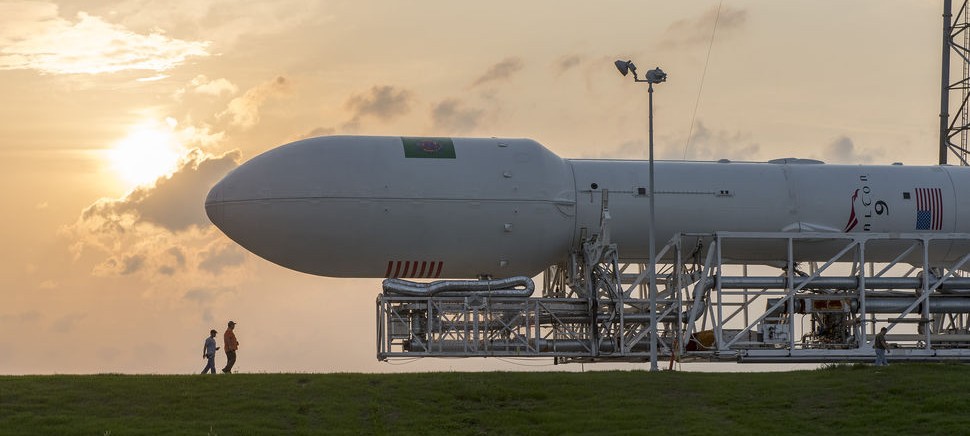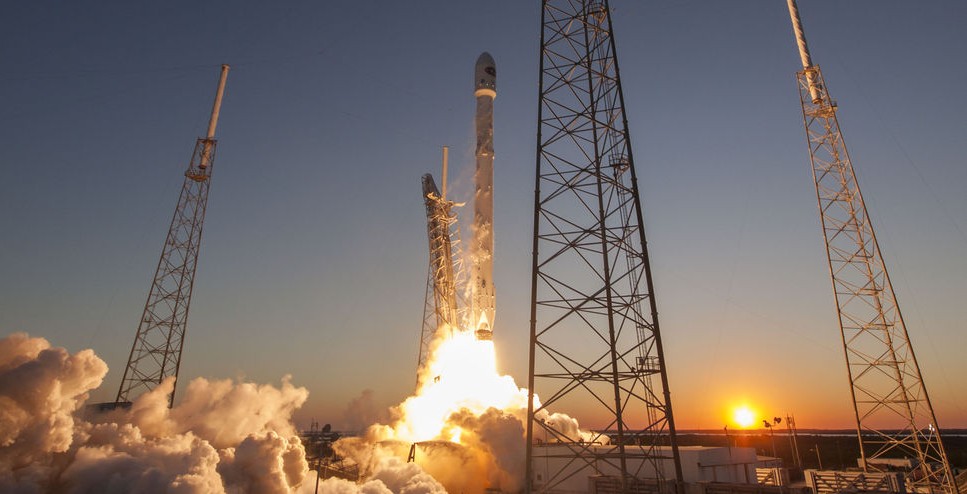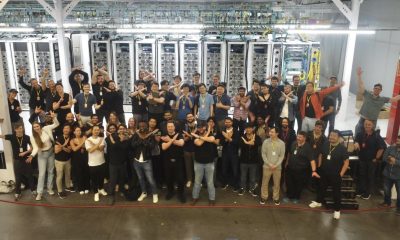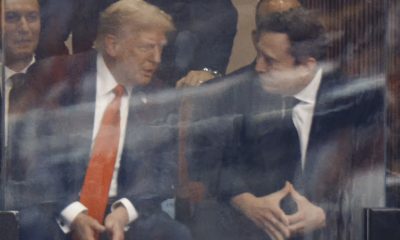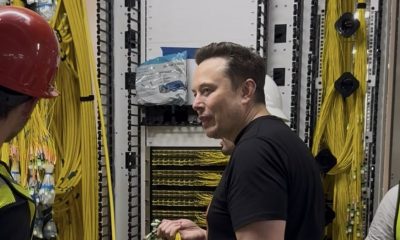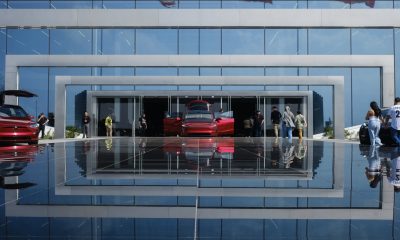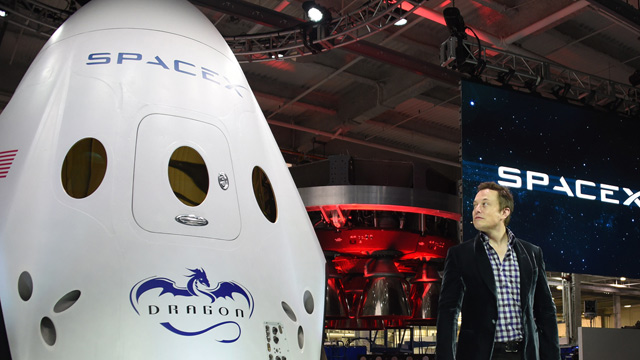

News
Of Mice And Musk: A SpaceX Odyssey
Elon Musk has dreamed of a human colony on Mars since he was a young man. Today, his SpaceX company is taking the first steps toward achieving that dream.
As Ashlee Vance tells it, one wall of Elon Musk’s office at SpaceX headquarters in Hawthorne, California, contains two posters of Mars. On the left is Mars as it exists today – a frozen, lifeless orb. On the right is Musk’s vision of Mars as it could be — a happy place inhabited by humans who frolic on verdant continents surrounded by oceans.
“I would like to die thinking that humanity has a bright future,” he tells Vance while eating cookies and cream with sprinkles on top. “If we can solve sustainable energy and be well on our way to becoming a multi-planetary species with a self-sustaining civilization on another planet—to cope with a worst-case scenario happening and extinguishing human consciousness— then I think that would be really good.” No one has ever accused Elon Musk of thinking too small.
At the turn of the 21st century, Musk had two Martian fantasies. One was to send a colony of mice to the Red Planet and bring them back again, along with their interplanetary babies. The other involved building a greenhouse on Mars and letting Earthlings see the plants inside grow over the internet. Each venture required at least one if not two rocket ships.
He and a coterie of friends traveled twice to Moscow, once in 2001 and again in 2002, trying to purchase surplus Russian rockets that could be refurbished for the Martian missions. The first time did not go well. Recalls Jim Cantrell, one of the team that traveled to Moscow with Musk, “One of their chief designers spit on me and Elon because he thought we were full of shit.” On the second excursion, Musk became convinced the Russians he was meeting with were only interested in fleecing a gullible American with too much money and too few brains.
On the way home from the second failed mission, Musk astonished his team by announcing, “Hey, guys, I think we can build this rocket ourselves.” In June 2002, Space Exploration Technologies, popularly known as SpaceX, was formed to build a cheaper rocket that could carry small payloads into space for paying clients on an average of once a month. The only problem? It had no rocket.
Such trifles were never matters to hold Elon Musk back. He assembled a team of committed rocket engineers and set about accomplishing, with millions, what NASA spent billions doing. Musk’s principle talent, apart from concocting outrageously impossible dreams, is finding people to work for him who are ready, willing and eager to give up all semblance of a normal life in exchange for insane working hours in remote locations. One test launching area was set up in the middle of Texas and another on far away Kwajalein Island, the largest island in an atoll between Guam and Hawaii that is part of the Marshall Islands.
“I would like to die thinking that humanity has a bright future”
SpaceX CEO, Elon Musk
Musk is not a man without a sense of humor. He dubbed his new rocket Falcon 1, paying homage to the Millennium Falcon of Star Wars fame. On its first flight on March 24, 2006, it crashed back to Earth after only 25 seconds. SpaceX employees dutifully donned scuba gear to retrieve some of the pieces from the ocean and set about rebuilding for another attempt.
Musk responded by hiring more engineers and starting work on a brand new rocket, the Falcon 9, that featured one large central rocket surrounded by 8 smaller rockets. Despite the failure of Falcon 1, Musk was already busy positioning the company to bid on NASA contracts to resupply the International Space Station.
On September 1, 2008, Falcon 1 flew its first successful mission. SpaceX was a viable commercial company at last but one that was rapidly going broke. At the end of 2008, Musk knew he would have to choose between SpaceX and Tesla. Alone, one of them might survive. Together? The odds were, both would fail. Musk worried that Tesla would be bought out by one of the Big Three automakers and become just a small part of a giant company.
Later in 2008, Tesla was within hours of defaulting on its payroll obligations. If that happened, Musk’s personal fortune would be gone, along with Tesla and SpaceX. He asked for help from venture capital group VantagePoint but was rebuffed. That’s when Musk put all his chips on red and let them ride.
With all of his dreams and aspirations on the line, Musk executed a colossal bluff. He told investors he would put in $40,000,000 of his own fortune to keep the business going — $40,000,000 he didn’t have. Based on his assurances, other investors agreed to put up $20,000,000 more in financing and the crisis passed. A few weeks later, NASA awarded SpaceX a $1.6 billion contract to do twleve ISS re-supply missions.
Antonio Gracias, a Tesla and SpaceX investor and one of Musk’s closest friends, watched all of this at close hand. He says 2008 told him everything he would ever need to know about Musk’s character. “He has the ability to work harder and endure more stress than anyone I’ve ever met,” Gracias says. “What he went through in 2008 would have broken anyone else. Most people who are under that sort of pressure fray. Their decisions go bad. Elon gets hyperrational. He’s still able to make very clear, long-term decisions. The harder it gets, the better he gets.”
Today, SpaceX launches an average of one rocket a month, carrying payloads for many companies and several nations. Its prices undercut those of Boeing, Lockheed Martin, and Orbital Science by a wide margin. Many of its competitors rely on Russian and other foreign suppliers but SpaceX makes its machines from scratch in the U.S.
Its clientele includes Canadian, European, and Asian customers and it has more than 50 flights planned over the coming years worth more than $5 billion. The company remains privately owned, with Musk as the largest shareholder. SpaceX is profitable and is estimated to be worth $12 billion.
The Falcon 9 has gone from a fantasy to SpaceX’s workhorse. Painted pure white with only an American flag and the SpaceX logo adorning its sides, there’s nothing particularly flashy looking about the Falcon 9. It’s just an elegant, purposeful machine. And to think that for a period of weeks just a few years ago, it’s ability to lead mankind into the dawn of commercial space travel almost died before it was ever born, thanks to a bluff so bold and so daring, it would leave most of us breathless.
Jimmy Buffett once sang, “Read dozens of books about heroes and crooks, and I learned much from both of their styles.” Which one is Elon Musk? Read Ashlee Vance’s book and make up your own mind.
Source: Bloomberg
News
The truth about Tesla ‘Mad Max’ mode from an actual user
Some people might see “Mad Max” as an extension of their daily driving.
For me, I did not see it that way. I saw it as a useful tool for certain situations, but it was certainly not something I could compare to my personal driving style.
But that does not mean that it’s wrong.
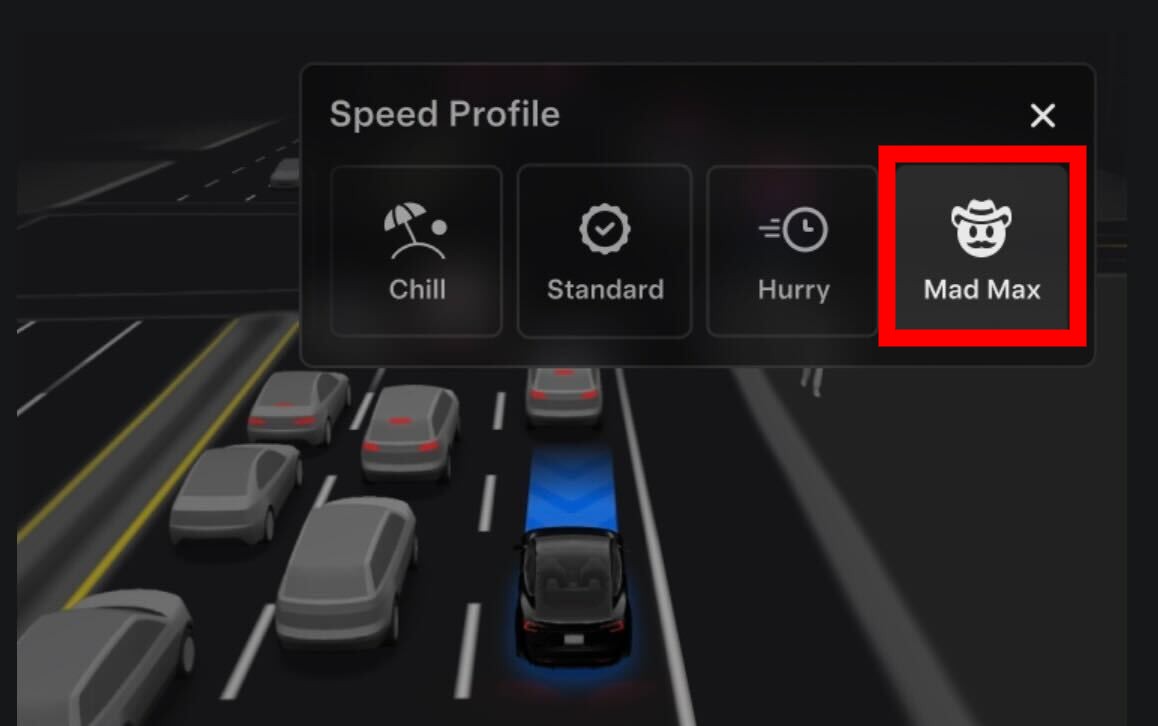
There have been many headlines about Tesla’s new “Mad Max” mode, but many of those writing about the “dangerous” and “controversial” mode have probably never used it.
As a writer, I write about topics I do not have firsthand experience with, but the job requires me to take a fair stance and report what is known. The problem is the nature of driving and driving modes, specifically, is subjective.
Some people might see “Mad Max” as an extension of their daily driving.
For me, I did not see it that way. I saw it as a useful tool for certain situations, but it was certainly not something I could compare to my personal driving style.
But that does not mean that it’s wrong.
NHTSA Probes Tesla Over “Mad Max”
Last week, the NHTSA launched a bit of a probe into Mad Max mode, requesting additional information on the Speed Profile and reiterating that the driver of the car is still required to be in ultimate control.
It’s important to keep the latter portion of that sentence in mind for the true thesis of this piece.
Now, it is no surprise to me that Mad Max garnered attention from regulatory agencies, as it is definitely a more spirited driving profile than the others.
Is Mad Max That Big of a Deal?
Regulatory agencies are responsible for keeping people safe, and it is important to note that their control is somewhat necessary. However, this type of drive mode is optional, requires the driver’s attention, and should be used responsibly for safe travel.
Playing Devil’s Advocate, how is Mad Max any different than the performance modes that some sports cars have? Because they require the driver to operate fully, and they are not semi-autonomous like Tesla can offer with Mad Max in Full Self-Driving (Supervised), are they safer?
The argument here really comes down to whether FSD is being used responsibly and correctly; any accelerated drive mode becomes more of a risk if the vehicle operator is not paying attention. This applies to any car company or drive mode they choose to use on their cars.
My Personal Experience with Mad Max
I have used Mad Max probably ten times since it rolled out to Early Access Program (EAP) members a few weeks ago.
I’ll admit: it did a lot of things I would never do driving a car manually. It passed people on the right. It was the fastest vehicle on the interstate, at least until I crossed into Maryland. Then, it seemed to be just another car on the road.
🚨 Tesla “Mad Max” testing on FSD v14.1.2
It drives like a human being! Consistent lane changes, keeps up with quicker traffic, very refined
Well done Tesla Team pic.twitter.com/wzTucDhczA
— TESLARATI (@Teslarati) October 19, 2025
It drove quickly, and not so fast that I felt concerned for my safety, which I never feared for, but fast enough that, at certain points, I was concerned that a cop would pull me over. I never encountered that scenario, but I wouldn’t be surprised if it resulted in some tickets.
With that being said, I don’t particularly think I’d use Mad Max in more than a handful of applications: driving the Baltimore Beltway would be one instance, navigating traffic in Baltimore, Philadelphia, or Pittsburgh during heavy traffic, or cruising on I-95, where cars routinely are going 100 MPH, much faster than Mad Max would ever travel.
Is it too quick for me in residential settings? For me, yes. Is it faster than every human driving on those roads? Absolutely not. In my experience, it is quicker than some, slower than others, just like any other Speed Mode Tesla offers, even Sloth, which refuses to go over the posted speed limit.
I think it’s wrong to sit here and act as if Mad Max is some incredibly dangerous and life-threatening hazard. If a driver is uncomfortable with the maneuvers or speed, they do not have to use it. However, it is no different from how many other cars travel on the road; it is far from an anomaly.
Tesla FSD’s new Mad Max mode is getting rave reviews from users
With that being said, it will be interesting to see if the NHTSA does anything about Mad Max, whether it will require Tesla to “nerf” the Speed Profile, or remove it altogether. It’s also important to note that this is my personal experience with Mad Max, and what I’ve experienced might differ from others’.
I would love to hear your thoughts on how Mad Max has driven for you, or your impressions of it.
News
Tesla prepares for full-throttle manufacturing of major product
Tesla has the second quarter of 2026 as its projected start date for Cybercab production. It also plans to launch Semi and Megapack 3 for “volume production” starting next year, which will also be two major contributors to the company.
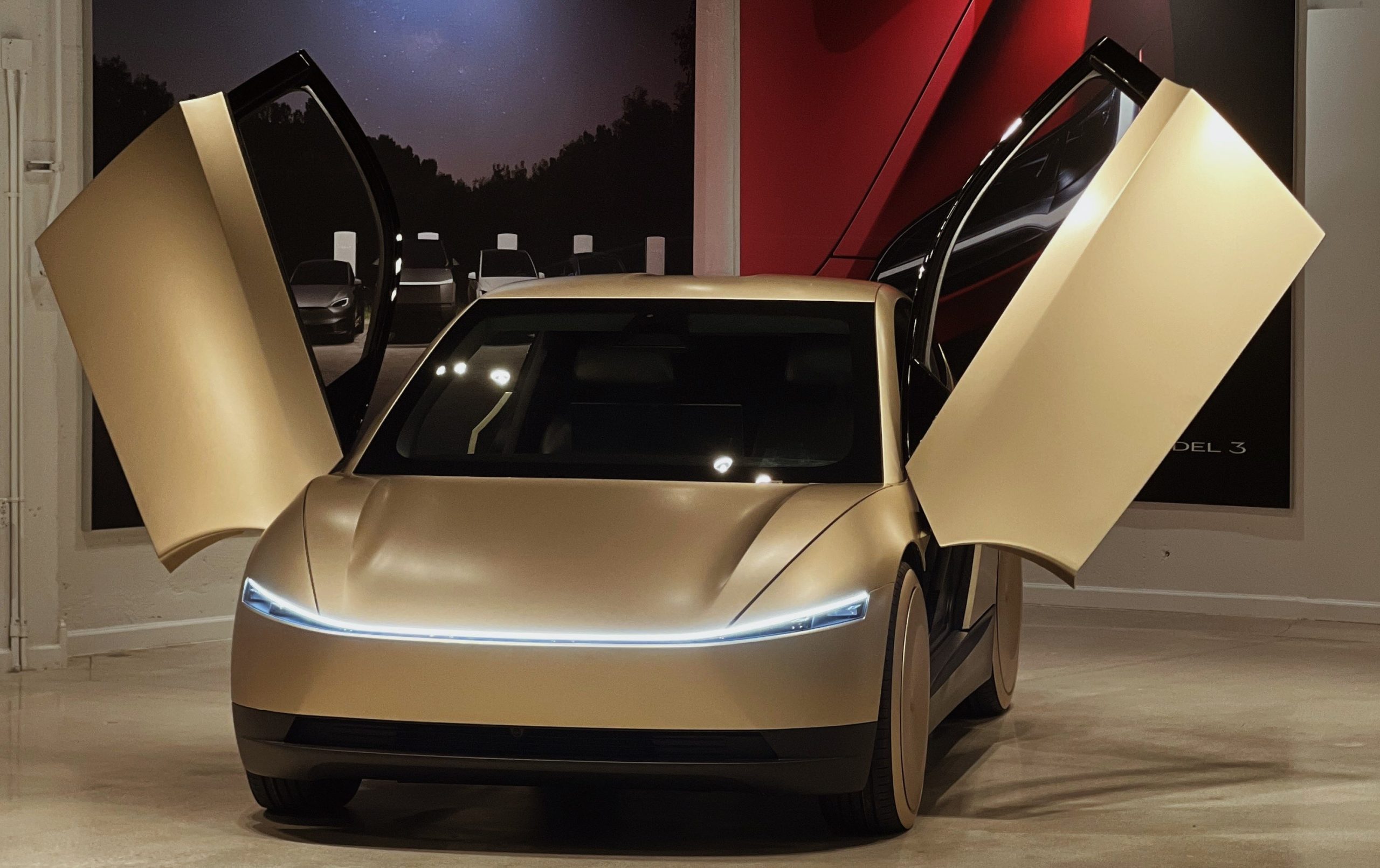
Tesla is preparing for a full-throttle manufacturing effort of potentially its biggest product in company history, job postings on the company’s website show.
In preparation for its foray into fully autonomous travel, Tesla is gearing up for Cybercab manufacturing with 30 job postings, ranging from repair technicians to manufacturing specialists.
Elon Musk sets definitive Tesla Cybercab production date and puts a rumor to rest
The jobs are all located in Austin, Texas, where the company’s Gigafactory Texas facility is located. This is where Cybercab production is going to take place.
Tesla has made major strides in the Cybercab project over the past few months, including launching the vehicle on the Fremont Test Track in California and conducting crash testing at Gigafactory Texas.
All of these indicate the company is preparing for an imminent production effort of the vehicle, which, as Elon Musk said during last week’s Earnings Call, will be void of a steering wheel or pedals.
Tesla has the second quarter of 2026 as its projected start date for Cybercab production. It also plans to launch Semi and Megapack 3 for “volume production” starting next year, which will also be two major contributors to the company.
Musk spoke in great detail during the Earnings Call last week about Cybercab’s potential to change the grand picture of the automotive market, comparing other vehicles in the Tesla lineup to “a little bit of the horse-carriage thing.”
He said:
“That’s really a vehicle that’s optimized for full autonomy. It, in fact, does not have a steering wheel or pedals and is really an enduring optimization on minimizing cost per mile for fully considered cost per mile of operation. For our other vehicles, they still have a little bit of the horse carriage thing going on where, obviously, if you’ve got steering wheels and pedals and you’re designing a car that people might want to go very direct past acceleration and tight cornering, like high-performance cars, then you’re going to design a different car than one that is optimized for a comfortable ride and doesn’t expect to go past sort of 85 or 90 miles an hour.”
Cybercab production is imminent, given the job postings and the company’s proposed timeline for manufacturing to begin. Of course, there is always the potential that Tesla is late to the party, as it has been with other projects.
Elon Musk
xAI’s Grokipedia goes live, gets praise from Wikipedia co-founder
xAI’s latest creation, Grokipedia, has gone live, and even if it’s only at Version 0.1, it is already receiving positive reviews from some users.
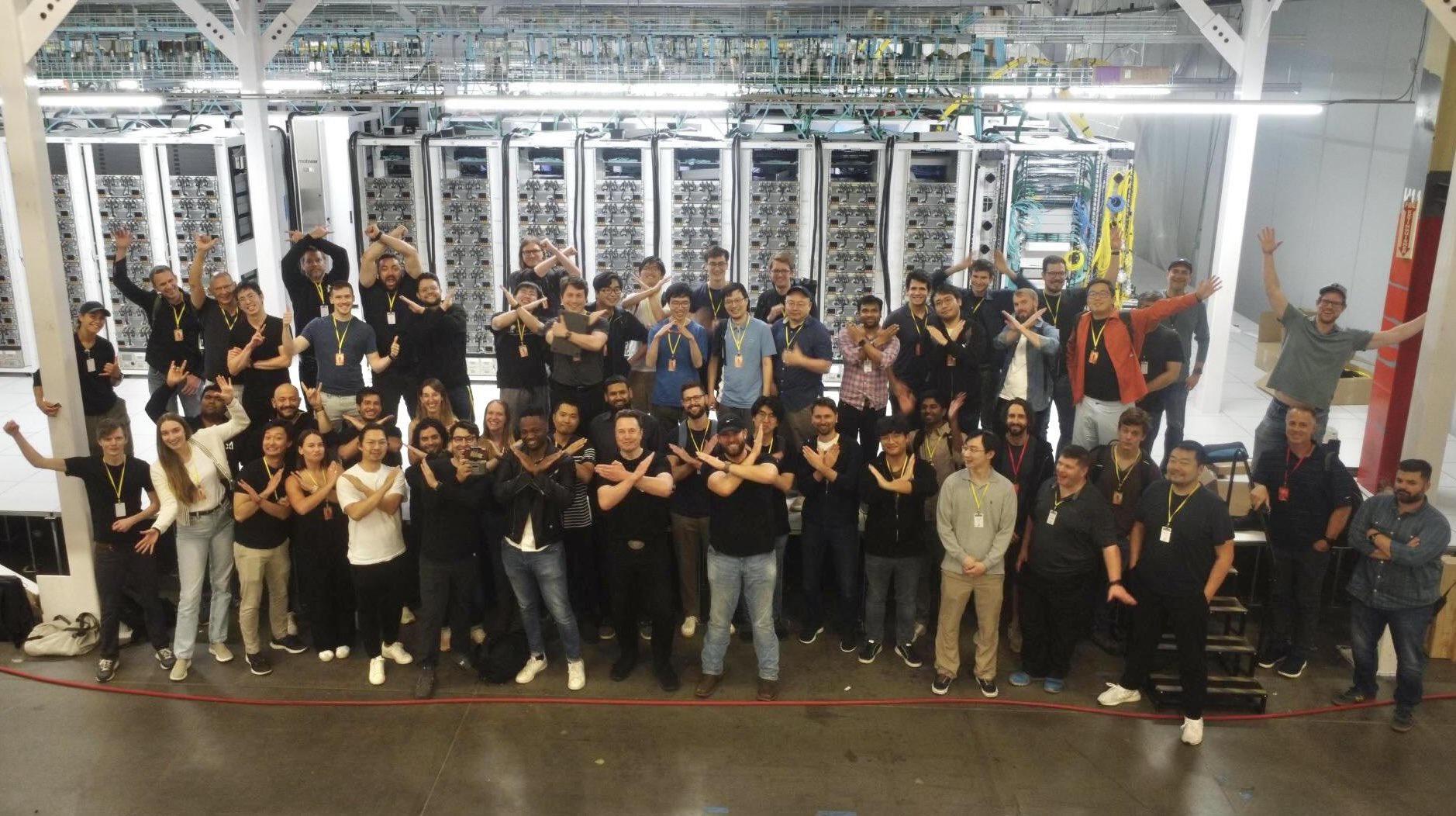
xAI’s latest creation, Grokipedia, has gone live, and even if it’s only at Version 0.1, it is already receiving positive reviews from some users. These include Larry Sanger, the co-founder of Wikipedia, the world’s largest online encyclopedia, which has become quite controversial in recent years over accusations of bias.
Grokipedia launches
Immediately after Grokipedia went live, the AI-powered Wikipedia alternative was tested by numerous users. So far, a good number of testers have responded positively to the online encyclopedia, with many observing that Grokipedia does tend to be more neutral than Wikipedia. This was particularly evident in controversial topics, from alternative medicine to events like Gamergate.
Among these users was Larry Sanger, who noted that while Grokipedia still has a lot of areas of improvement, it is already very promising. “My initial impression, looking at my own article and poking around here and there, is that Grokipedia is very OK. The jury’s still out as to whether it’s actually better than Wikipedia. But at this point I would have to say “maybe!” He wrote in a post on X.
Musk responded to Sanger’s comments, stating that the Wikipedia co-founder’s observations are “accurate.” The xAI founder also noted in a separate X post that even in its V0.1 form, Grokipedia is already better than Wikipedia.
Why Grokipedia exists
During an interview on the Tucker Carlson Show, Sanger point out that Wikipedia has become a far cry from his initial vision for the online encyclopedia, and a lot of this was because of the its “Reliable sources/Perennial sources” page, which categories publications and sources into tiers of credibility. Sanger noted that the list leaned heavily left, with conservative publications getting effectively blacklisted in favor of their more liberal.
Musk responded to Sanger’s comments by stating that Grokipedia will be created as a step towards xAI’s broader goal of “understanding the Universe.” He added that Grokipedia, which will use xAI’s Grok, would provide broader sourcing and a freer exchange of information compared to Wikipedia’s current system.
One month after Elon Musk’s comments, Grokipedia has gone live in its V0.1 form.
-

 Elon Musk2 weeks ago
Elon Musk2 weeks agoSpaceX posts Starship booster feat that’s so nutty, it doesn’t even look real
-

 Elon Musk1 week ago
Elon Musk1 week agoTesla Full Self-Driving gets an offer to be insured for ‘almost free’
-

 News1 week ago
News1 week agoElon Musk confirms Tesla FSD V14.2 will see widespread rollout
-

 News2 weeks ago
News2 weeks agoTesla is adding an interesting feature to its centerscreen in a coming update
-

 News2 weeks ago
News2 weeks agoTesla launches new interior option for Model Y
-

 News2 weeks ago
News2 weeks agoTesla widens rollout of new Full Self-Driving suite to more owners
-

 Elon Musk2 weeks ago
Elon Musk2 weeks agoTesla CEO Elon Musk’s $1 trillion pay package hits first adversity from proxy firm
-

 News1 week ago
News1 week agoTesla might be doing away with a long-included feature with its vehicles

